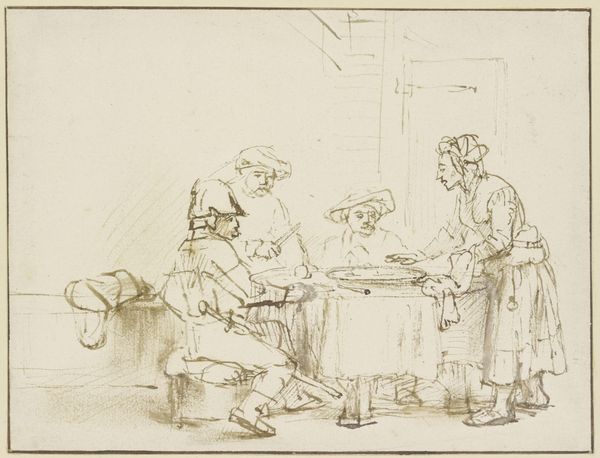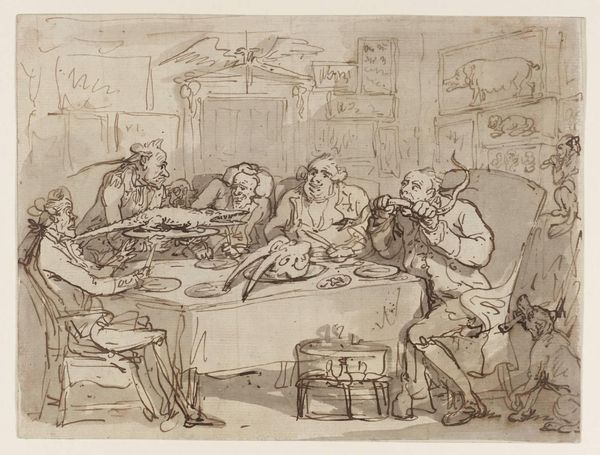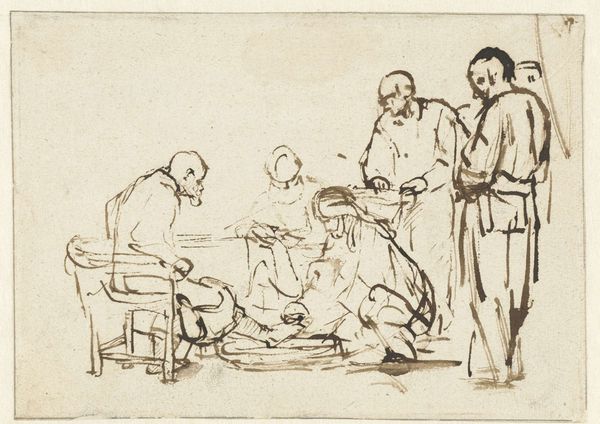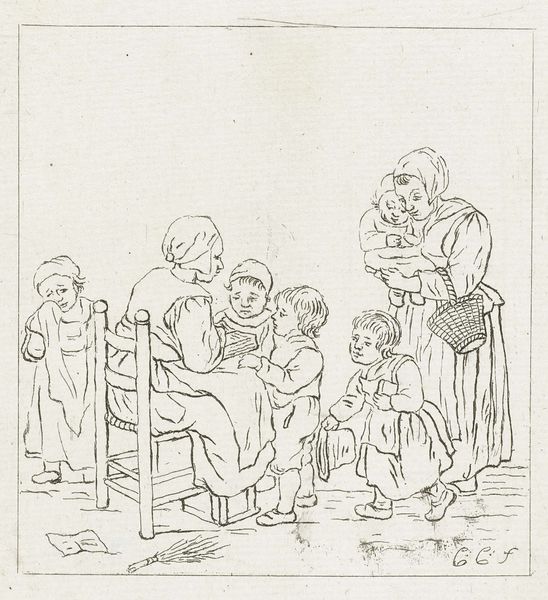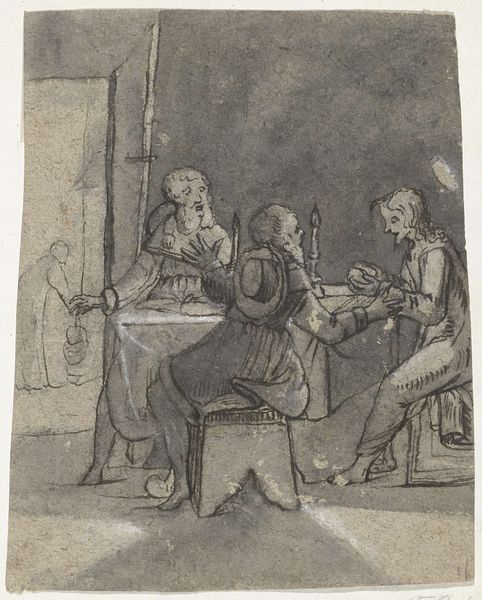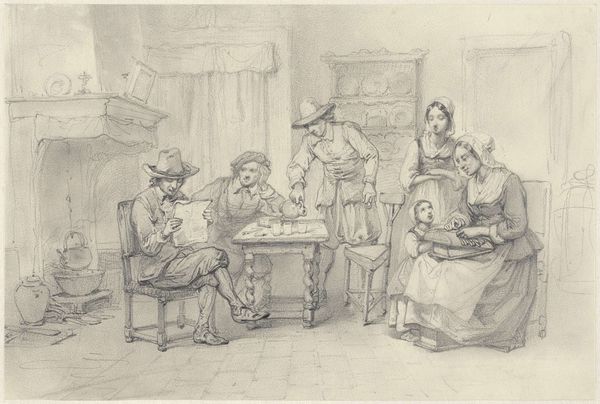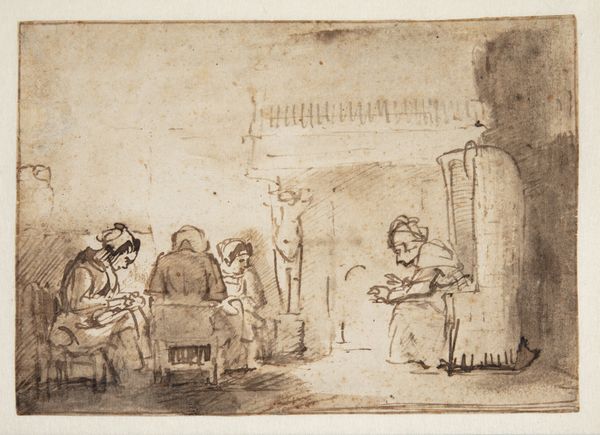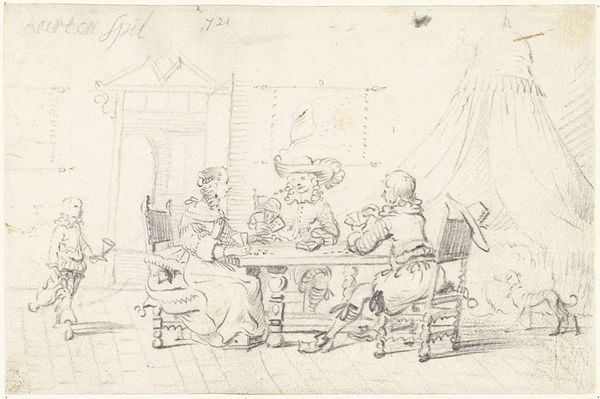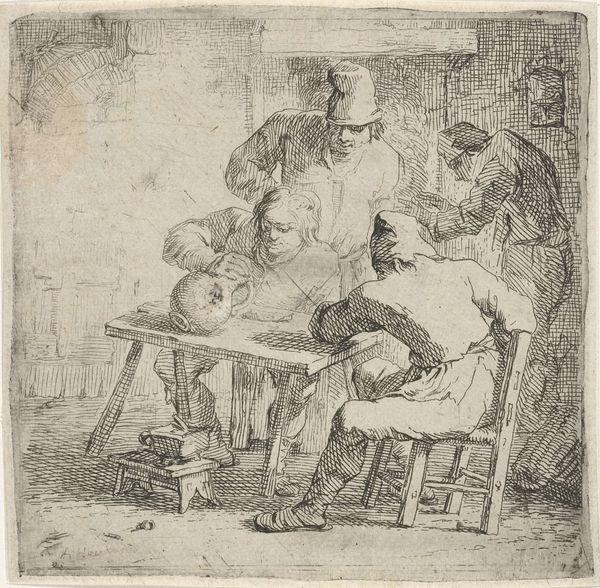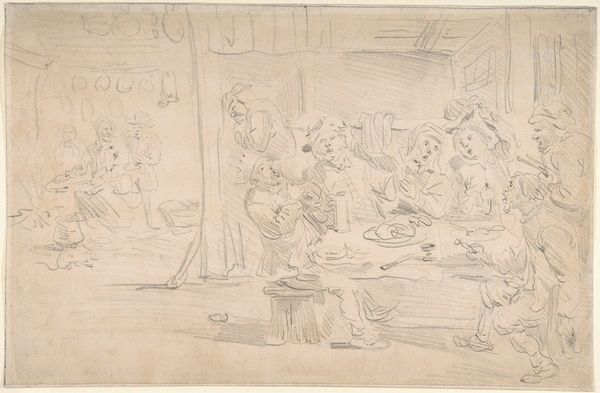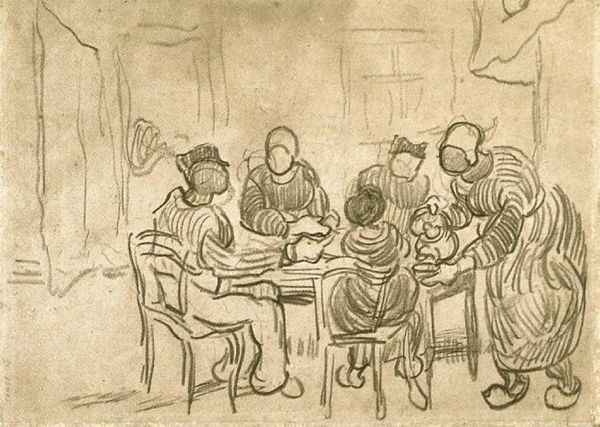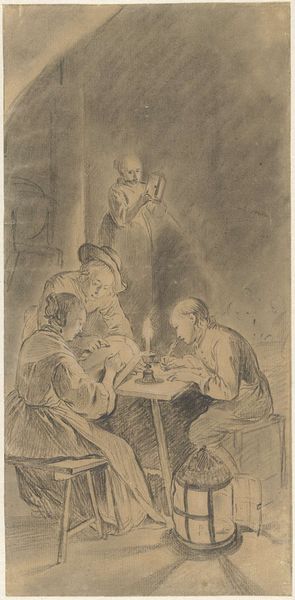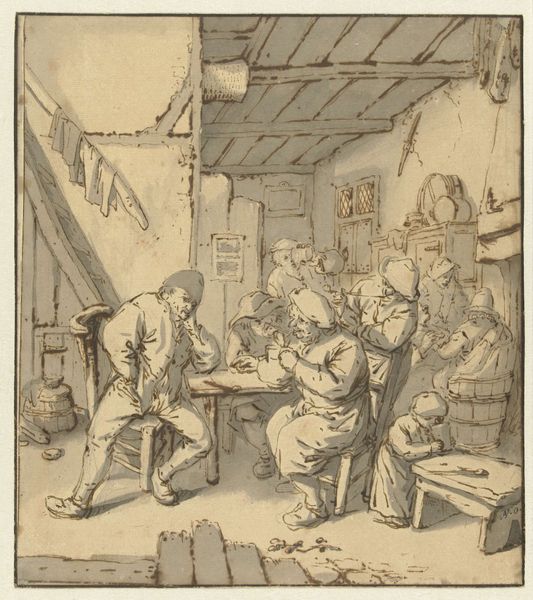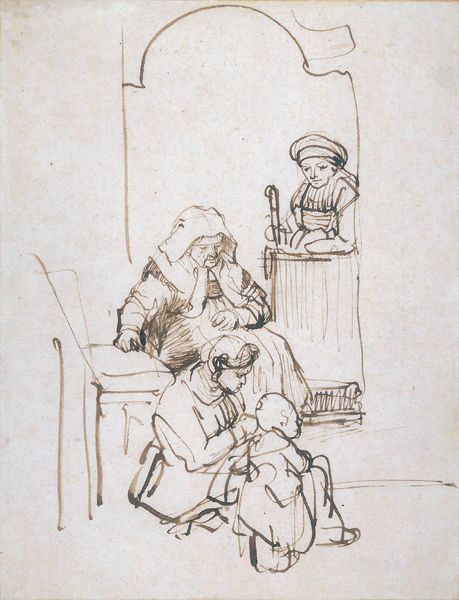
drawing, paper, pencil
#
portrait
#
drawing
#
pencil sketch
#
paper
#
group-portraits
#
pencil
#
genre-painting
#
realism
Dimensions: height 151 mm, width 219 mm
Copyright: Rijks Museum: Open Domain
Editor: David Bles created "The Empty Chair" in 1869, using pencil on paper. It strikes me as rather melancholy; there's a tangible sense of absence despite the figures present. What do you make of this domestic scene? Curator: It’s intriguing how Bles stages this moment, isn't it? Note the title itself, "De lege stoel," signaling a deliberate focus on what's missing. Who do you think occupied the empty chair, and how does its absence shape our understanding of the scene's social dynamics? Editor: Perhaps someone recently deceased? There’s a woman standing to the side, seemingly detached, while others sit at the table. The slumped posture of one figure really reinforces this feeling of sorrow or loss. Curator: Exactly. Bles, working in a period where Realism was gaining traction, was deeply aware of the socio-political power dynamics inherent in depicting everyday life. Consider the family, seemingly of means, at the table. Is Bles commenting on the impact of death on even the privileged? Or, does it represent a broader societal emptiness? The unfinished quality of the sketch adds to this sense of impermanence and loss. Does the 'genre painting' style inform his social critique? Editor: That's a compelling point about Realism's role here. I hadn't thought about how his artistic choices contribute to broader social questions around grief and privilege. How was a 'genre painting' usually consumed, and how would that change our interpretation? Curator: These scenes were highly marketable, circulated widely through prints and accessible to a burgeoning middle class eager to understand social customs. By depicting an intimate scene of grief within this accessible format, Bles possibly aimed to democratize the experience, inviting a broader audience to contemplate these feelings. What did you expect when you first examined the piece, and how has that changed? Editor: Initially, I focused on the individual grief depicted. But now, considering the social and historical context, it’s more of an invitation to think about grief as a shared, societal experience that transcends class. Curator: Precisely. The power of art, then, lies in its capacity to reveal these unspoken social and cultural dialogues.
Comments
No comments
Be the first to comment and join the conversation on the ultimate creative platform.
